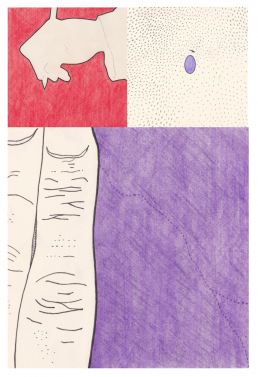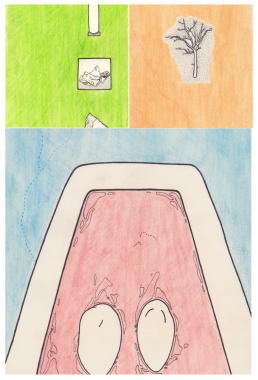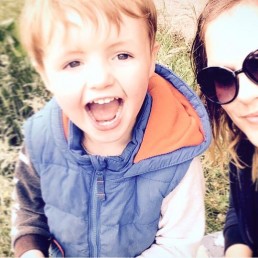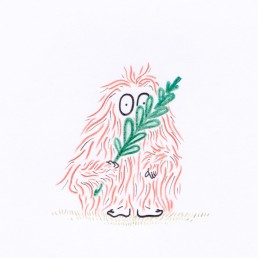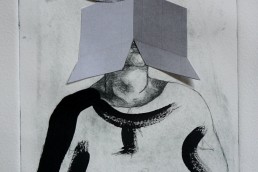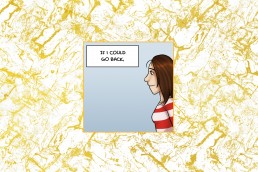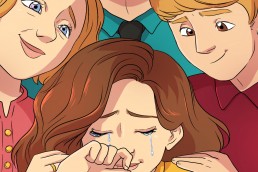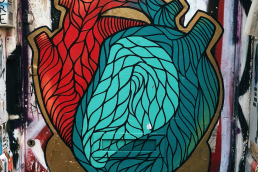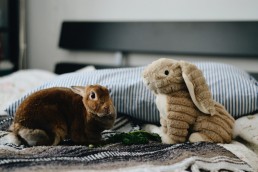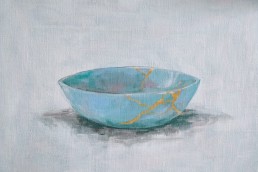Words by Sophie Isaacson | Art by Daisy Macari
Sophie Isaacson on finding a sense of place in a high speed, overwhelming and globalised society
In the past, people here were often born and raised in small rural communities or townships with close groups of families and friends surrounding them. They were raised living and working in harmony with their environment and with the land to which they felt they belonged. They socialised together and passed on ancient stories and songs describing the intimacies of the mountains, rivers, glens and woodlands where they lived and the traditions belonging to them for generations before; rooting them to their place. Each person both took from and gave back to the land and were aware of its needs; they appreciated every blade of grass which grew around them.
However, a sense of place today is far more complex to pinpoint than one community or one physical place, with each person having a more layered sense of identity, place and heritage to attach themselves to. It is far easier for people to move; not only around their own country but also right across the globe meaning that often by the time we arrive in adulthood that we’ve spent time with a variety of different people in a variety of cultures, communities and countries.
Is a sense of place really important?
Firstly, on a practical level the place where we live shapes our quality of life. Different places are distinguished by the people who live in them, the religions which are practised there, their level of isolation, economic opportunity, community councils, governments and the physical landscape and natural resources which they are made up of. All of these factors determine how liveable a place is and the quality of life of its inhabitants.
History also holds a vitally important role when looking at our sense of place. As time passes, places change, and every place has a legacy of past events. Memories become attached to battlefields, to cleared villages and to places where life changing events took place. A sense of place describes not only the places where we have lived, our current communities and villages but it also describes every place which we as humans attach a sense of belonging and identity to. For example, how a person can feel at home in their grandmother’s back garden or in a holiday destination which they visited a number of times as a child. It can relate to a place which evokes a particular feeling or emotion or just somewhere where we feel we have historical or emotional connection and roots.
On a wider level, having a firm sense of place in the world strengthens our sense of identity, anchors us and helps to give us a holistic view of who we actually are. It helps us to understand the people which we have come from and more about how our ancestors before us lived. It can also explain our behaviours and tendencies as the research into intergenerational inheritance of trauma is developing. We can now begin to understand that things which happened to our people hundreds of years before we were born can still have an effect on how we act and think today.
One of the advantages of transit and technology being so advanced today is that each person can inhabit not just one place but a variety of places throughout their lifetimes as well as at any one given moment. This is due to the fact that people interact with their environments and with other people on many different levels at the same time; in their houses, in their communities, within their local districts, their countries and even beyond that by logging into vast social networks and as parts of larger interest organisations where they feel part of a group with a shared interest in a particular area. All of these variants contribute towards an individual’s sense of place in the world and helps them to shape their own identity and build themselves a map of their own treasured places.
You can see, how in today’s world we have so much more choice about where we weigh our sense of identity and place. Our communities aren’t tight like they once were; we don’t know all of our neighbours and our families are spread across the globe. We can choose now in 2018 to live in a community and not interact with a single other person there as people are able to travel elsewhere easily and readily have access to everything they need via the internet. We now take for granted the meanings of names of the places where we live, the uses of the land that were once vital to everyday survival and most of us have little to no knowledge of the traditions and language which have shaped our area.
Society today pushes us to rush, to spend, to travel and it’s no wonder that we’ve become somewhat confused and off our natural paths and cycles. We are now more shaped by our online profiles, other people’s perceptions of us and our harsh self-comparisons to fictional characters who we see on Instagram or in magazines than we are by knowing our own family history and bloodlines.
But does this lack of real foundation have an effect on us?
Or is it irrelevant in this fast-moving, screen-scrolling, Snapchatting generation? The Dictionary of Psychology states that “It is our sense of identity that makes us who we are and how we are different from everybody else.”
To me, that’s quite an important thing to get on top of. By feeling confident in our sense of place, holding on tightly to our sense of identity and heritage and remaining attentive to the places and people who keep us grounded, we can better face moments of chaos and difficulty which we will inevitably meet throughout our journeys.
It’s easy to say that becoming at one with our own sense of place and identity is a positive way to live but actually doing it is slightly more difficult. With the importance of passing down traditions dying out how can we cling onto where we came from and how our people lived? How can we really get to know ourselves again?
This is where technology can really help us out. Finding information about family origin and lineage is so much more accessible today than it was twenty years ago. Start with the basics and build up a family tree. Paint yourself a picture of the places which really make your heart warm and create your own personal map of identity. Don’t forget to include the people; partners, children, family members, friends, the people who you trust and love — these people are your community now. They might not all live in one place but they are your ‘village’.
And finally, dig down deep and organise your values and beliefs. For me, this has been one of the most challenging parts of filtering my sense of place in the world. With views being pushed at us from every side, the media trying to manipulate us and the peer pressure of what other people think, finding our true beliefs is a long and tricky path which must be followed and maintained.
Finally, finish by identifying the practises which really make us happy — whether it be yoga or baking scones. Give yourself time to focus on them, let them inspire and energise you and feel confident in yourself, what you can achieve and how far you’ve come already.
Sophie Isaacson
Energetic Scottish mummy with a passion for adventure and an insatiable craving for new knowledge! Sophie is obsessed with the sea and the mountains. She loves sitting next to the fire writing poems and going for picnics with her little boy on sunny days. ♥
Daisy Macari
I am a recent graduate from university of Brighton where I studied 3D Design and Craft, though I am currently based back the North East. I work with a wide range of materials, but I love drawing. I love exploring characters and often draw animals and whimsical monsters that struggle from very human problems. I also illustrate insects and beasts in a black and white graphic style (using these to develop into a hand screen printed clothing line).

